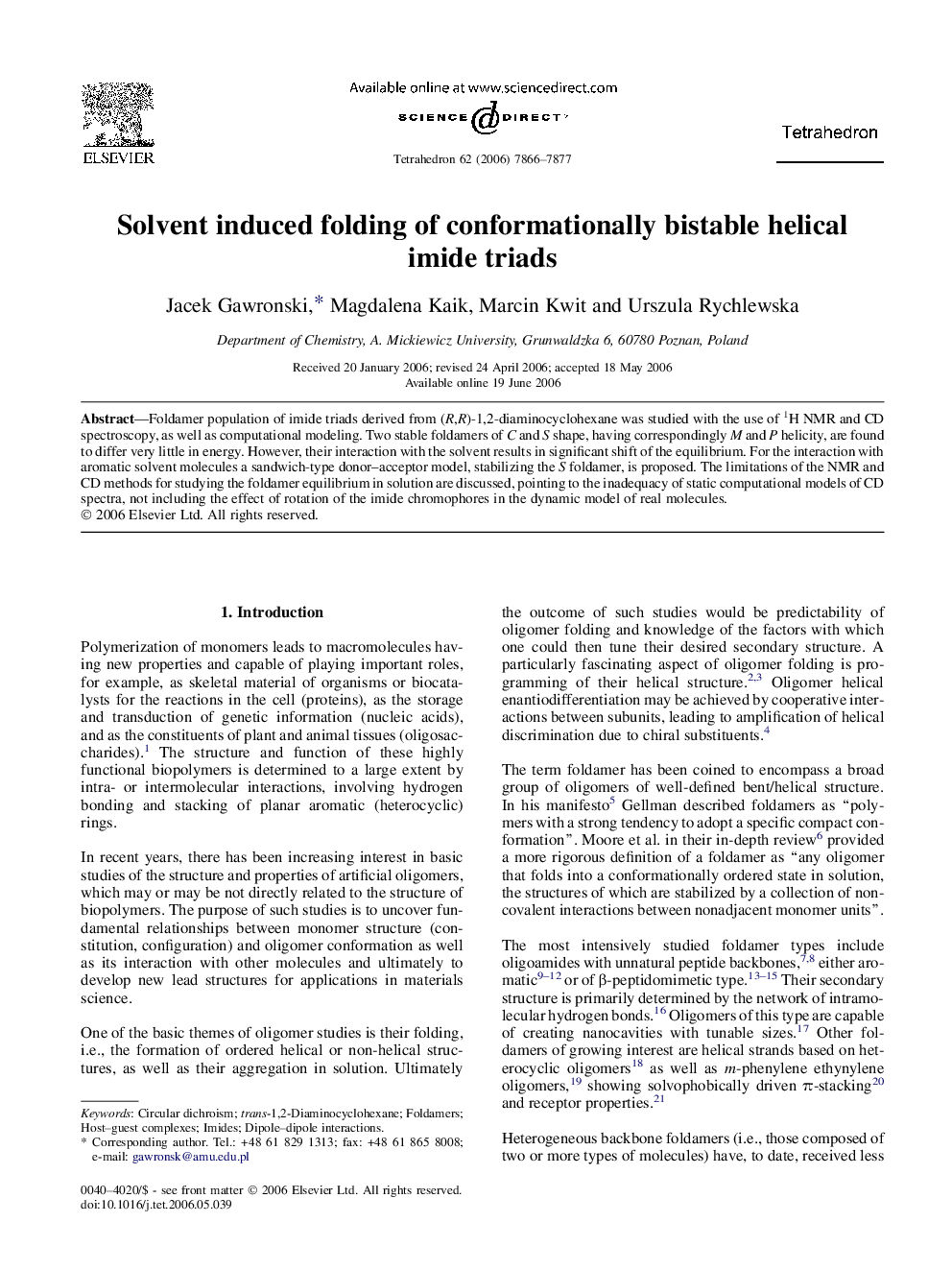| Article ID | Journal | Published Year | Pages | File Type |
|---|---|---|---|---|
| 5231219 | Tetrahedron | 2006 | 12 Pages |
Foldamer population of imide triads derived from (R,R)-1,2-diaminocyclohexane was studied with the use of 1H NMR and CD spectroscopy, as well as computational modeling. Two stable foldamers of C and S shape, having correspondingly M and P helicity, are found to differ very little in energy. However, their interaction with the solvent results in significant shift of the equilibrium. For the interaction with aromatic solvent molecules a sandwich-type donor–acceptor model, stabilizing the S foldamer, is proposed. The limitations of the NMR and CD methods for studying the foldamer equilibrium in solution are discussed, pointing to the inadequacy of static computational models of CD spectra, not including the effect of rotation of the imide chromophores in the dynamic model of real molecules.
Graphical abstractFigure optionsDownload full-size imageDownload as PowerPoint slide
